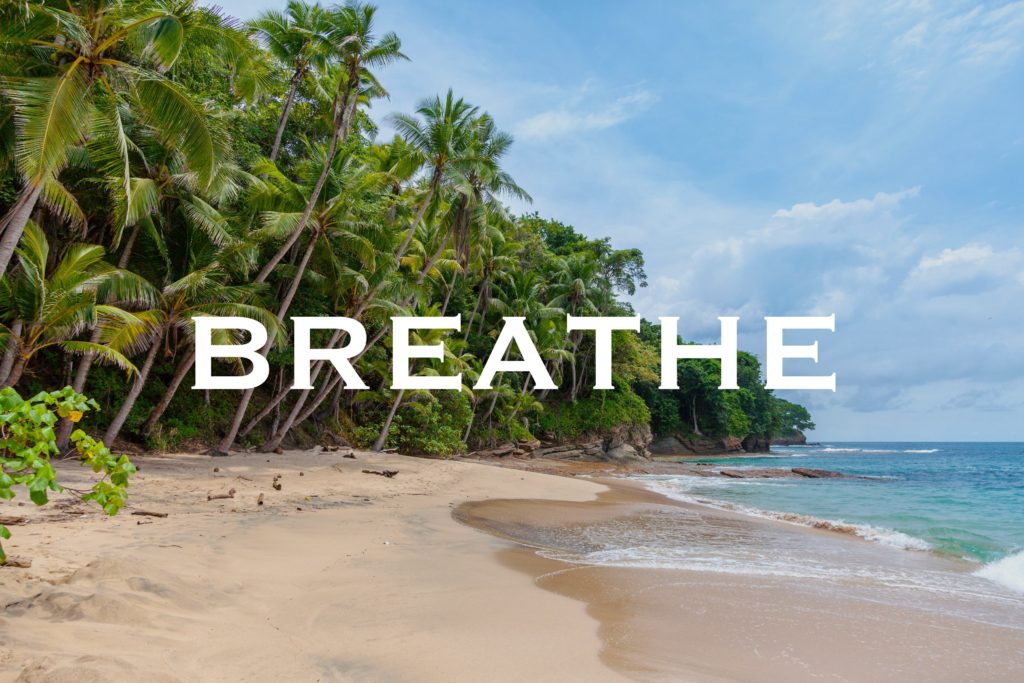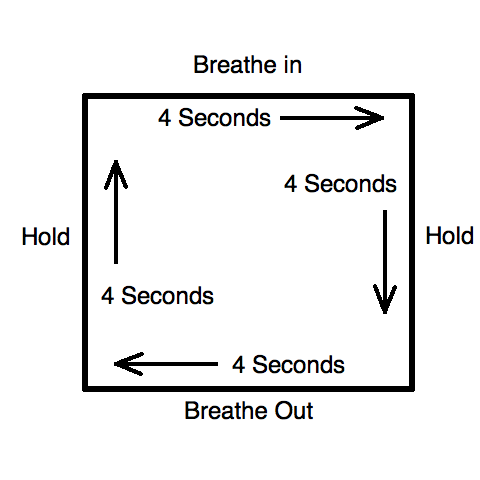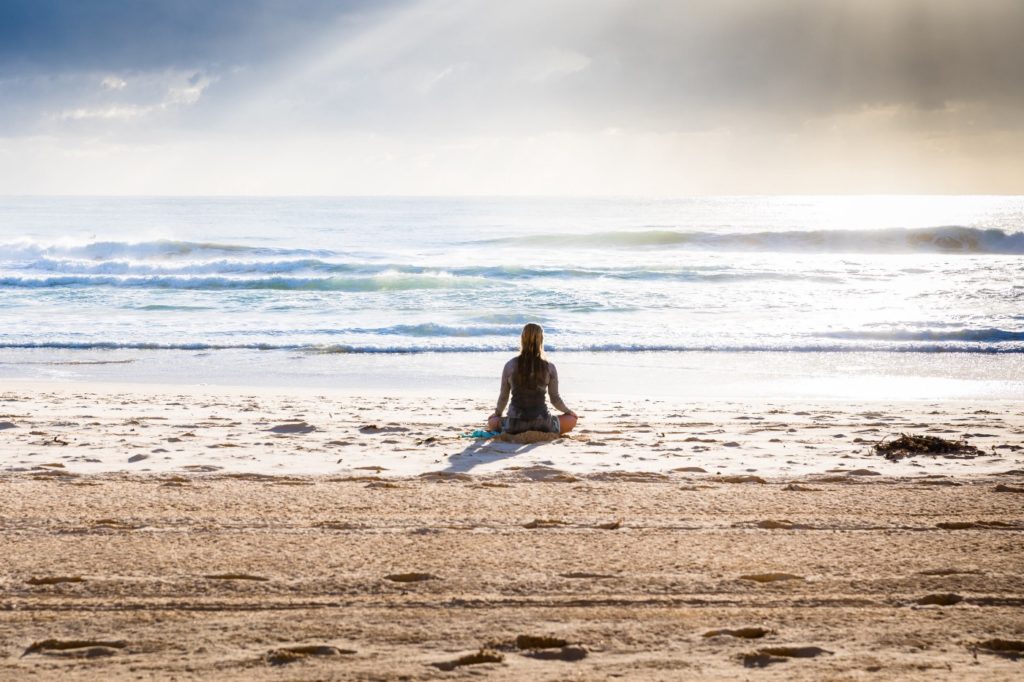
Breathing is a process that is regulated by the autonomic nervous system. This system functions automatically without a person’s conscious effort. Breathing is interesting because although it happens automatically, humans can also voluntarily control it. In this way, breathing can either be a bottom-up or top-down process. The following article will explore five breathing techniques that help to calm the mind, achieve greater focus, oxygenate the blood, and even gain access to the innermost parts of the human psyche.
Box Breathing
Box breathing, also known as Square breathing is a technique that has been popularized by former Navy Seal Mark Divine. This simple breathing technique is used as a mindfulness exercise to improve cognitive function and reduce stress. This breathing technique is called box breathing because there are 4 parts, like the 4 sides of a box. The way to do it is to breathe in for 4 seconds, hold for 4 seconds, breath out for 4 seconds, hold for 4 seconds, and repeat. Box Breathing can be done for longer than 4 seconds as well; some people prefer doing 10-second box breathing. What’s important is that you stay consistent with your in-breath, out-breath, and holding times. This breathing technique is especially useful when you are in a stressful situation and need to calm the mind.

Anapanasati
Anapanasati is a form of mindfulness breathing initially taught by Gautama Buddha. Anapanasati is the practice of cultivating a full awareness of the physical sensation the breath causes in the body during meditation. The Buddha advised practicing Anapanasati in the forest, at the foot of a tree, or in any deserted place. The best way to practice Anapanasati is to sit in a lotus position and keep the spine erect. When you breathe in, direct your attention to the in-breath “I am breathing in”. When you breathe out, direct your attention to the out-breath “I am breathing out”. Notice the sensations of how the breath fills your lungs when breathing in; notice the sensations when the breath leaves the lungs while exhaling. Anapanasati is all about developing a focused awareness of the breath.
Pranayama
Pranayama is an Indian system of yogic breathing. Prana means life force (sustained by the breath) and Yama means mastery or control. Together they could be understood as the praxis of controlling life force through breathing. Pranayama has been an integral part of the yogic tradition for thousands of years and was referenced in the Bhagavad Gita and in the Yoga Sutras of Patanjali. There are many different kinds of Pranayama breathing techniques, some of the most popular are:
- Dirga ‘Three-Part Breath’
- Nadi Sodhana ‘Alternate Nostril Breathing’
- Shitali ‘Cooling Breath’
- Ujjayi ‘Ocean Breath’
- Bhramari ‘Humming Bee Breath’
- Bhastrika ‘Bellows Breath’
- Viloma ‘Against The Wave’
- Kapalabhati ‘Skull Shining Breath’ & ‘Breath Of Fire’
Each of these Pranayama techniques has specific purposes and can be useful in a variety of situations. With that said, most Pranayama breathing techniques share the foundation of inhalation, retention, and exhalation. In the final analysis, Pranayama could be understood as a philosophy of breathing in which the practitioner exerts control over the breath in an effort to consciously direct qi (life force).

Wim Hof Method
Wim Hof, also known as the Iceman, is a Dutch extreme athlete who is best known for his ability to withstand freezing temperatures. Wim is a proponent of a specific type of breathing technique he calls the Wim Hof Method. This method was discovered by Wim while he was outside in freezing temperatures and noticed that the body’s innate response to being in the cold is to breathe deeply.
Wim Hof’s breathing technique consists of 30 deep breaths followed by exhalation and a breath-hold. By taking 30 deep breaths you oxygenate your blood so that pH levels increase and your blood becomes more alkaline. In doing so, your body does not need to breathe for a prolonged period of time. Many people are able to hold their breath with no air in the lungs for 1–4 minutes! Once you feel the need to breathe, take a deep breath in a hold for 10–15 seconds, and that is one round. Wim recommends people do 3 rounds of this breathing technique in one sitting in order to reap the full benefits that the method has to offer.
If you are interested in trying Wim’s breathing technique check out this video which guides you through 3 rounds of WHM breathing.

Holotropic Breathwork
Holotropic Breathwork is a breathing technique introduced by Dr. Stannislav Grof and his wife Christina Grof. Holotropic breathwork is based on the fundamental principle that we have all the answers inside of us. The Grofs created Holotropic breathing as a way to access inner wisdom while tapping into the deepest parts of the human psyche.
True holotropic breathwork is done in a 12-hour workshop and consists of 3-hour breathing sessions. However, it is also possible to do holotropic breathing in a shorter window of time. During a breathing session, it is common to experience a range of emotions and physical sensations.
This breathing technique holds massive psychological healing potential if done correctly; it can also be dangerous if done incorrectly. Holotropic breathwork is traditionally done with a trained facilitator and in the context of the proper set and setting. Holotropic breathing is the most intense of all the breathing techniques discussed in this article.
Last year I attended a holotropic breathwork workshop facilitated by Michael Stone, a former student of Dr. Stanilav Grof. During the workshop, I experienced a profound shift in consciousness that concluded in an unmistakable feeling of oneness and a sense of connection with myself and the world around me. This experience taught me a lot, both about breathwork and about the unchartered territory of the human mind.

This article summarized five unique breathing techniques and their applications. The breath is our primary physical connection to consciousness. Developing a relationship with breathing can be a powerful way to deepen mindfulness practices and strengthen connections to the internal landscape of the human psyche. Breathing exercises have been practiced for thousands of years as our ancestors were well aware of the powerful healing potential that the breath holds.
Oliver Krentzman
